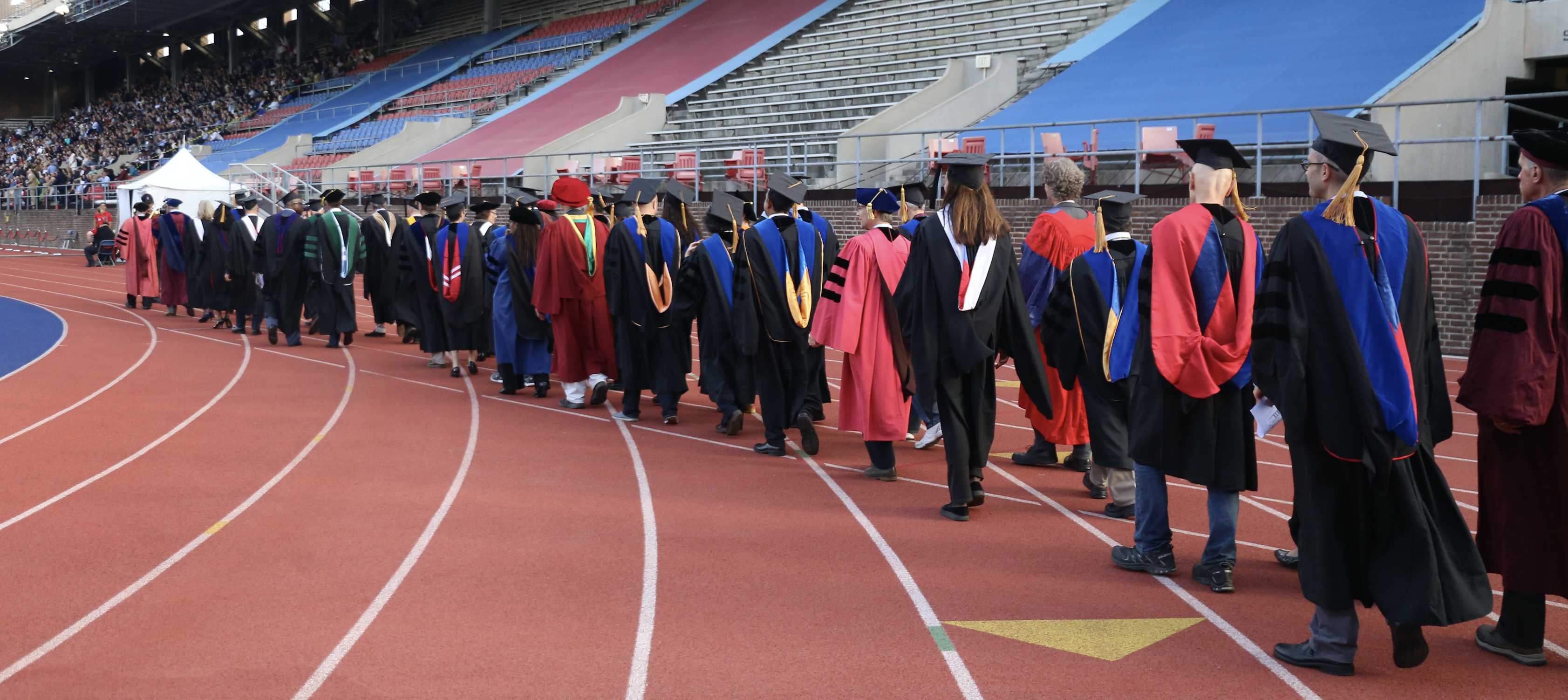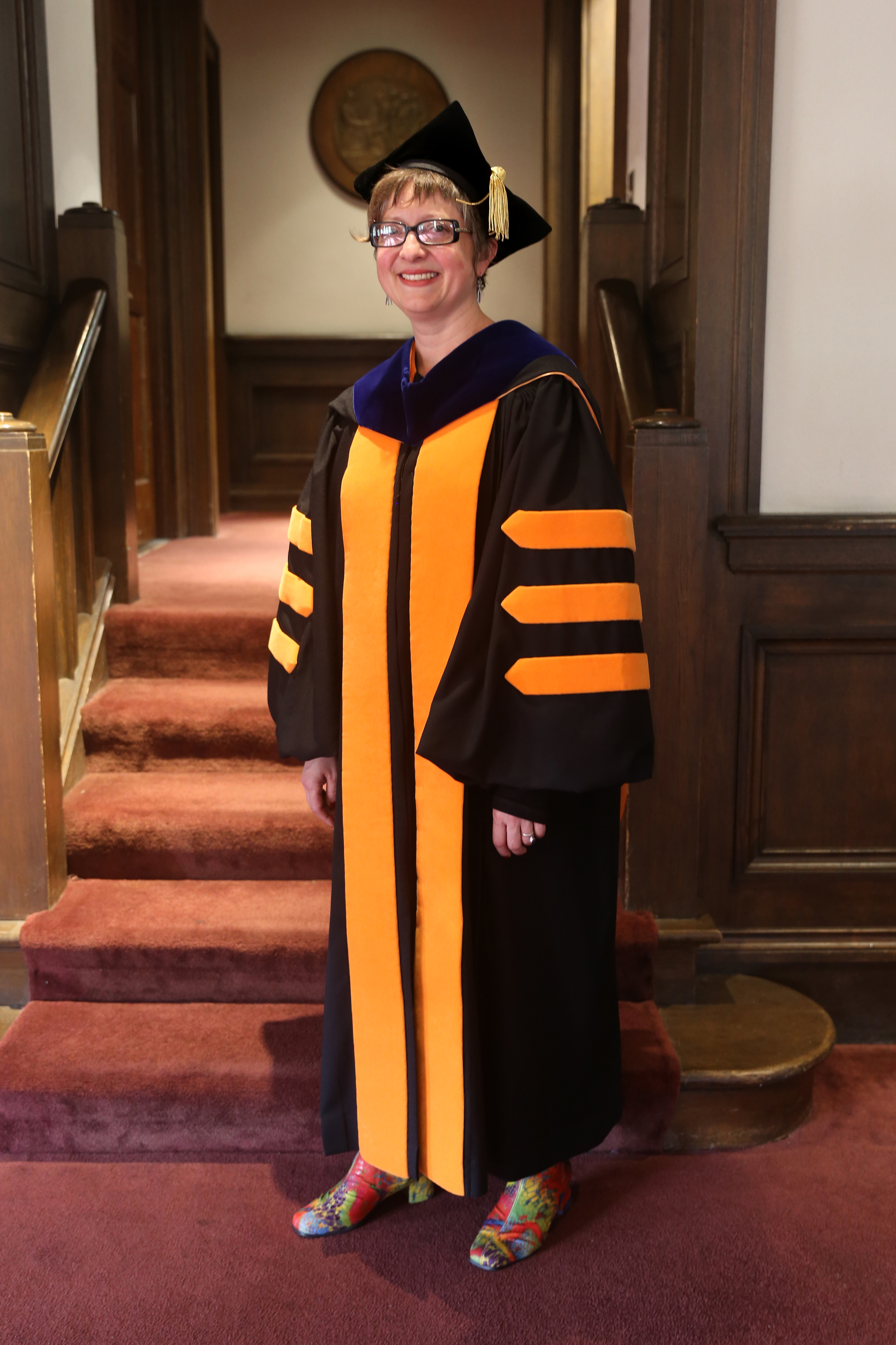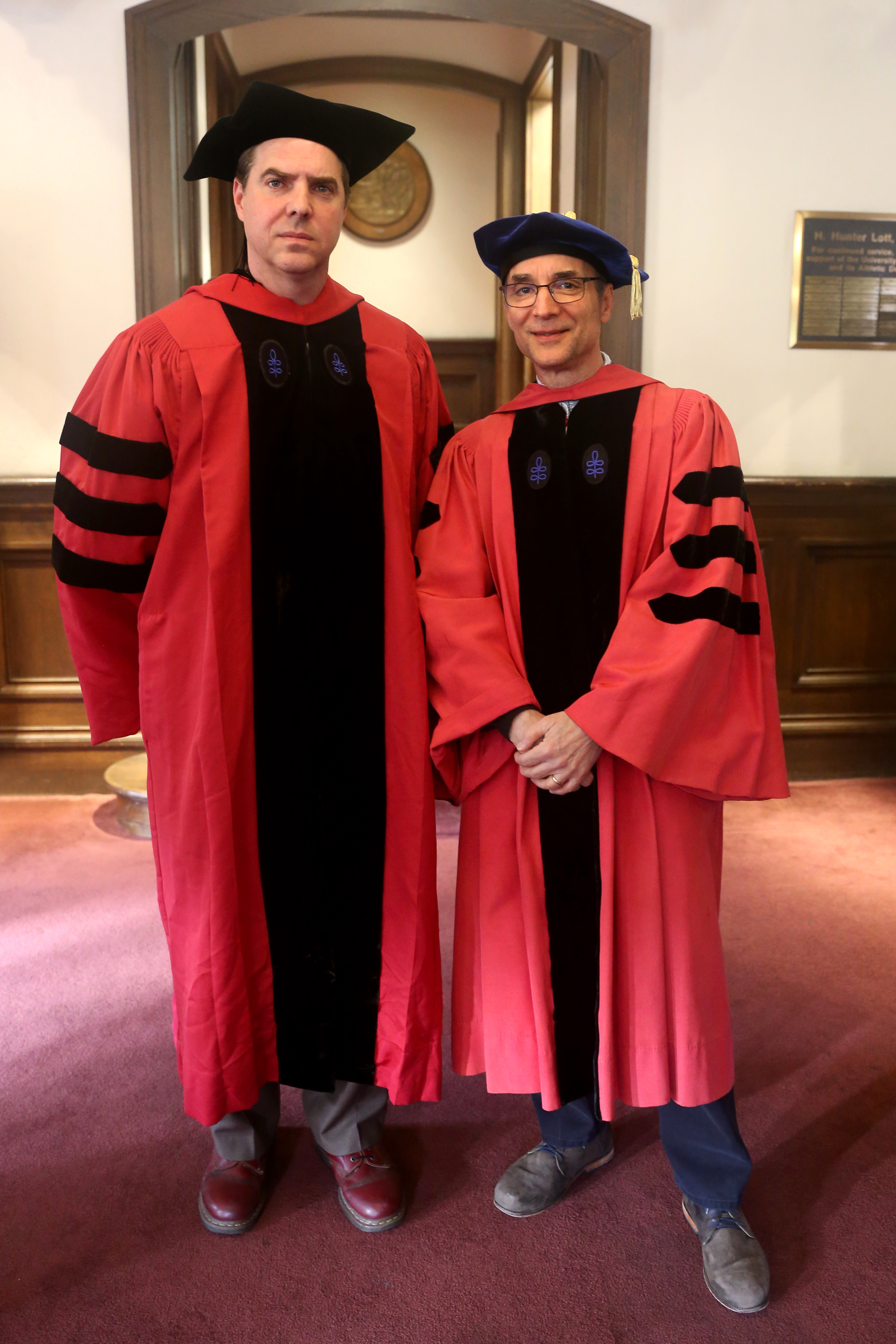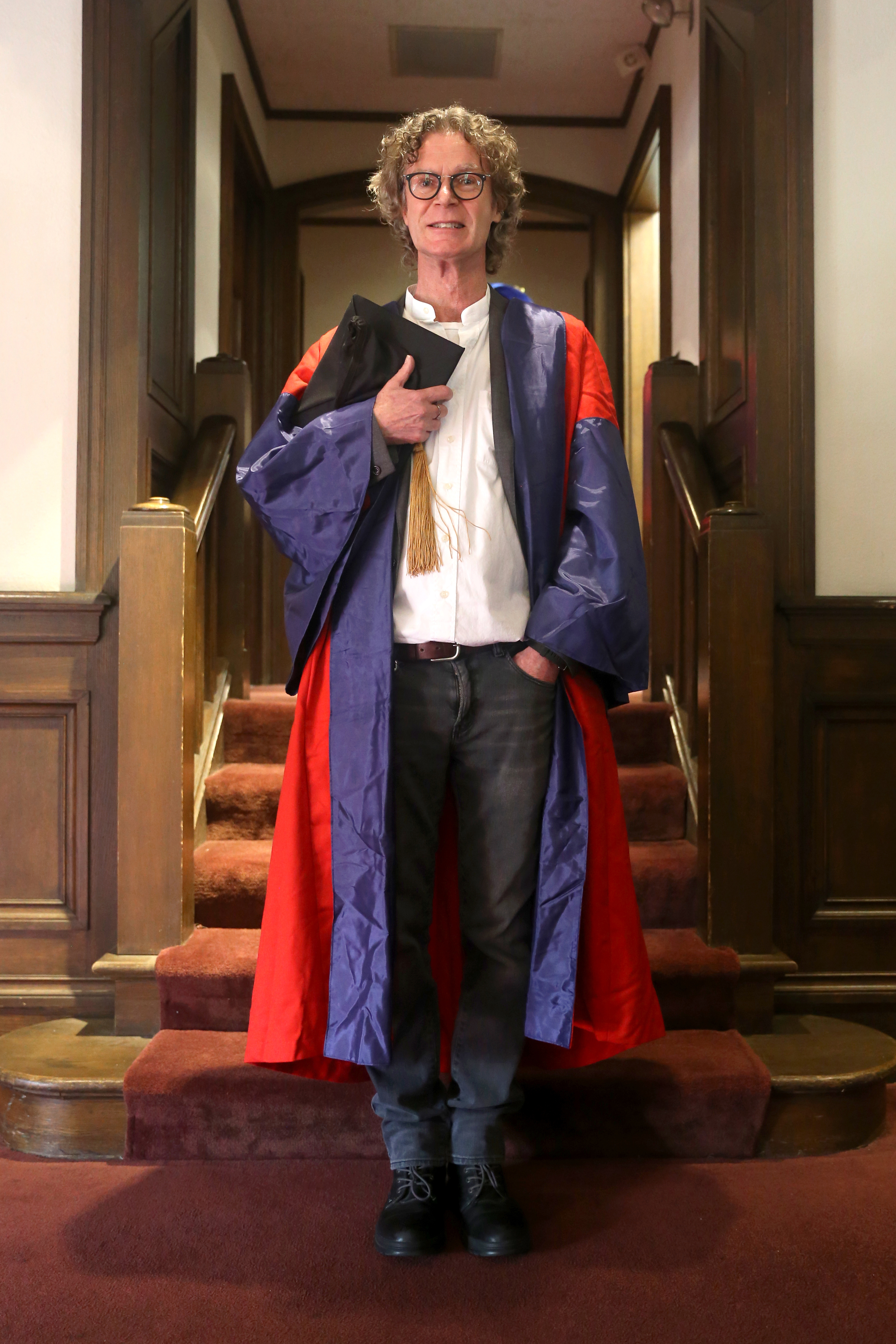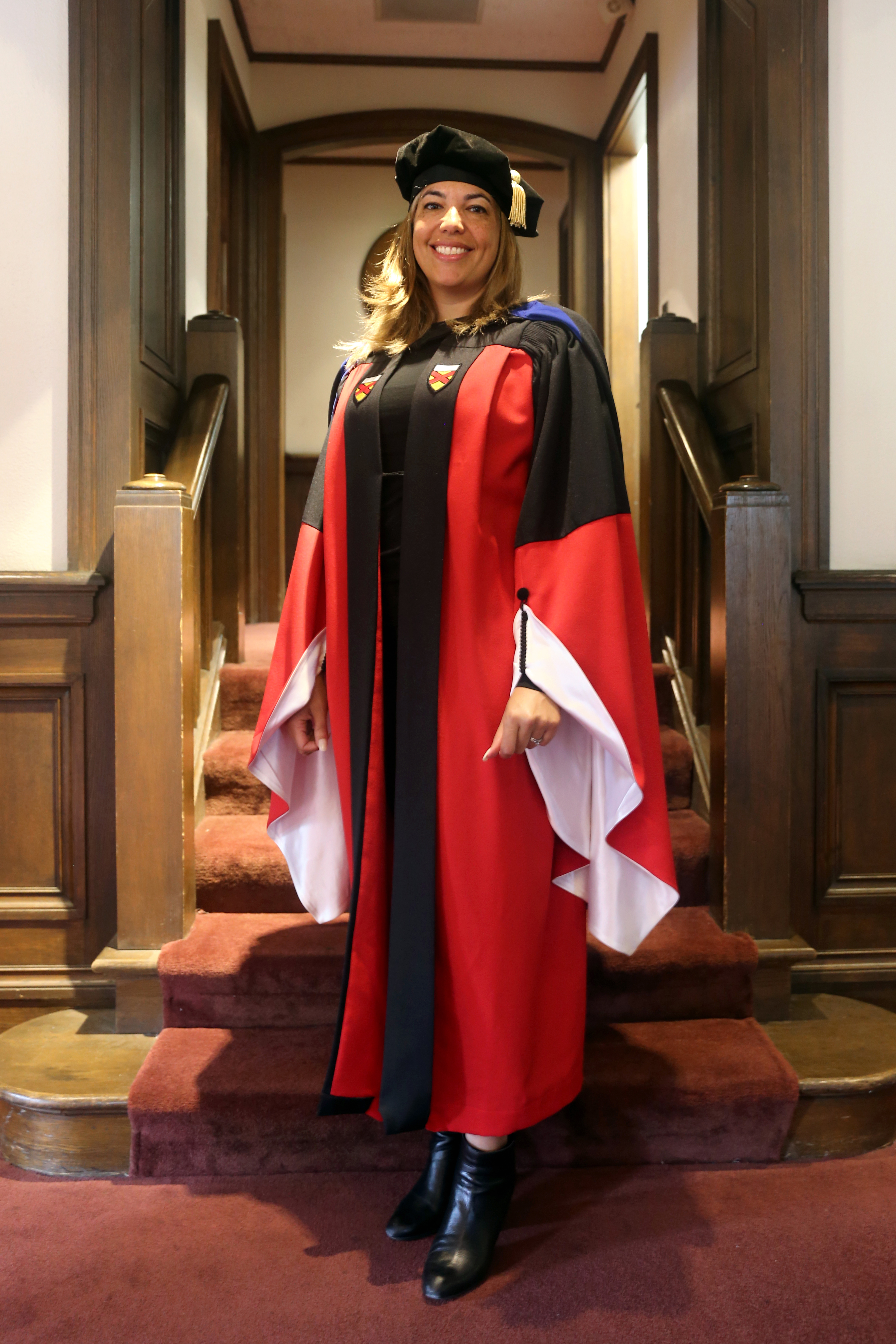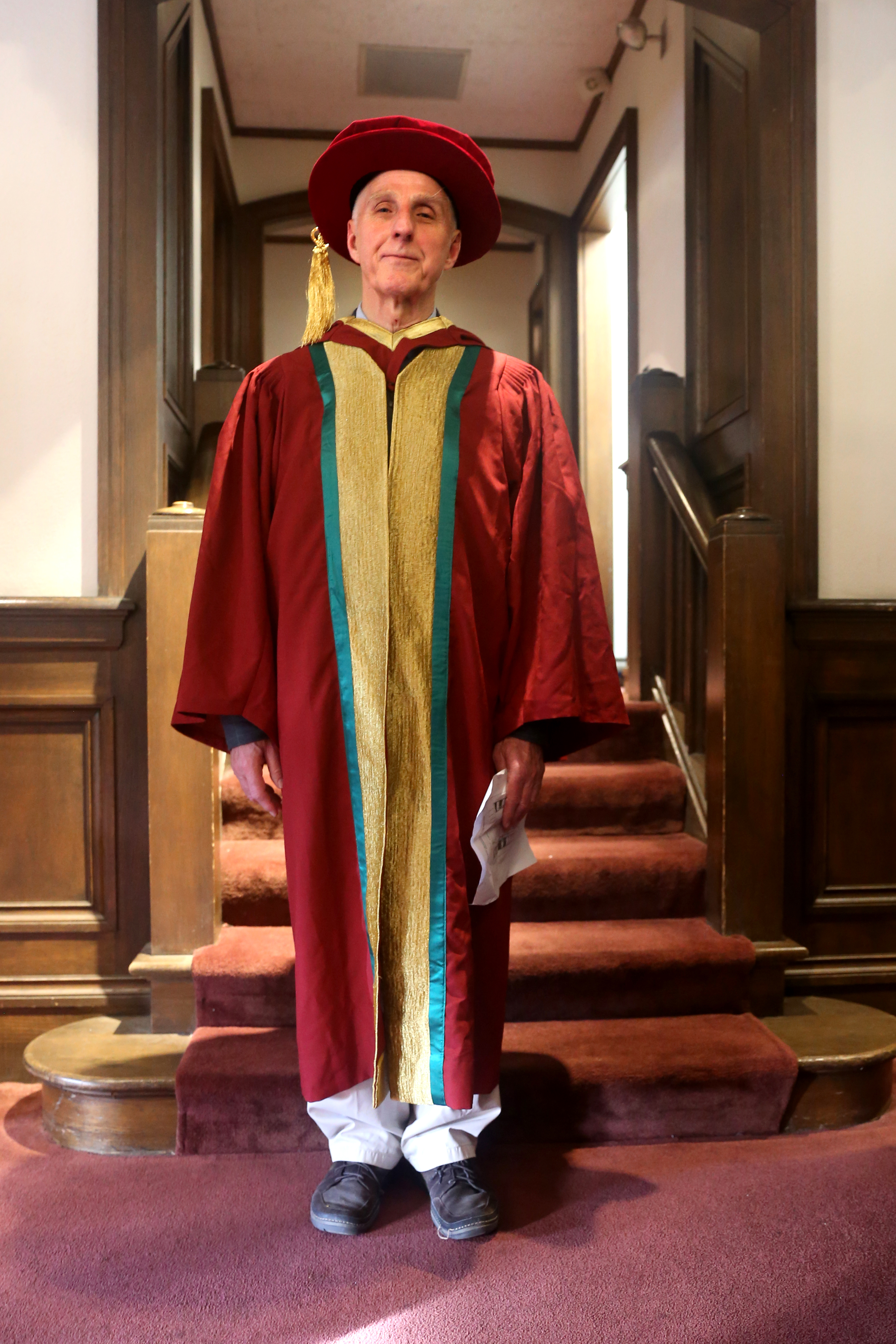College graduation day looks strikingly similar to graduation days of yore, with soon-to-be grads filling Franklin Field wearing black undergraduate robes and tasseled mortarboards. Faculty, wearing the robes and hoods from their graduate institutions, are a more vibrant group. Penn’s red and blue doctoral robes mingle with Harvard’s crimson and Columbia’s pale blue. An Oxford robe might appear, and hats of all shapes, sizes, and levels of puffiness adorn the scholars’ heads. This could be 2017, 1717, or 1117— academic dress has a history dating to medieval Europe.
Academic dress in the United States and Europe, also known as regalia, can be traced back to traditions begun by Oxford University (founded, by best estimates, in 1096), University of Cambridge (founded 1209), and Portugal’s University of Coimbra (founded 1290). When scholars wore robes and hoods in drafty libraries, hoods weren’t for decoration. They were to be worn as hoods. When hoods transitioned from functional to decorative, scholars began to add hats, and styles differ across institutions and countries. Square, flat caps become common in Britain, while French scholars adopted a fluted, pillbox style cap (très chic) and Spanish academics took a cue from Roman Catholic clerical dress and wore four-peaked, square hats called birettas.
The first U.S. universities were firmly rooted in the European tradition. However, while European universities generally set their own customs, U.S. academic dress is more standardized. Penn created internal standards for regalia in 1887; in 1895, that system was abandoned when representatives from leading academic institutions in the U.S. established a code to regulate the cut, color, style, and materials of the gowns. Additional adjustments to the code were made in 1932, and that was that.
From 11th-century scholars shivering by a fire to a parade of gowns at Franklin Field, wearing regalia has always symbolized academic achievement and commitment. Here, we take a look at some Penn Arts and Sciences professors, partying like it’s 1096.
Larry Silver, James and Nan Wagner Farquhar Professor of History of Art
Silver wears Harvard’s crimson robes, but the real story here is the mace he’s wielding. Like regalia, ceremonial maces have a long history. The earliest ceremonial maces were carried in royal processions and doubled as weapons. By the 14th century, maces were increasingly decorative and used in civic and academic processions.
The University mace Silver carries was a gift of the family of William Murray Gordon, M.D. 1910. It is adorned with the seal and arms of the University, the William Penn and Benjamin Franklin family coats-of-arms, a depiction of the Rittenhouse Orrery, and a thistle symbolizing the early ties of the University with the University of Edinburgh in Scotland. Each year, the Dean of Penn Arts and Sciences invites a retiring professor to hold the mace at the College graduation. The invited professor is someone who has made a mark on undergraduate education in his or her time at the School.
Silver, retiring after 20 years in the History of Art department, says he had fun as the mace-bearer and adds, “It’s lighter than it looks!”
Karen Redrobe, Elliot and Roslyn Jaffe Endowed Professor in Film Studies and Chair of History of Art
Redrobe wears the Princeton II regalia, which follows U.S. conventions set in 1895 and confirmed in 1932. An older, European-style regalia is also available to Princeton grads. In addition, she wears traditional, brightly colored boots—traditional to her, anyway.
“I bought those boots as a present to myself after my own Ph.D. graduation,” she says. “The Ph.D. is an extremely challenging degree; like academic life in general, doing it well requires an immense amount of stamina. I think it is important to remember the great joy that deep learning can bring, especially at these moments of completion. That’s part of what the boots are about for me. They are extremely uncomfortable, so I don’t wear them often, but I wear them every graduation both to remind myself of the trepidation and excitement you feel when you step out into the world with your new Ph.D., and to express sartorial solidarity with the queer community at graduation through my rainbow feet. As a bonus, rainbows happen to pair very well with orange.”
Justin McDaniel, Professor and Chair of Religious Studies (left), and Ralph Rosen, Vartan Gregorian Professor of the Humanities and Professor and Undergraduate Chair of Classical Studies (right)
McDaniel and Rosen also wear Harvard’s crimson robes. Most universities use the color of the hood to indicate a graduate’s field of study, but Harvard does things a little differently. All Harvard gowns have a set of embroidered crow’s feet on the chest; the color of the feet reflects the school from which the wearer graduated. Though McDaniel and Rosen are from different disciplines, the blue crow’s feet on their gowns indicate that they both graduated from the Faculty of Arts and Sciences.
In this photo, McDaniel might be pondering what to add to the syllabus next time he teaches Existential Despair, a Benjamin Franklin Seminar.
Philip Rea, Professor of Biology and Rebecka and Arie Belldegrun Distinguished Director, Roy and Diana Vagelos Program in Life Sciences and Management
Rea wears the unchanged-for-500-years robes of Oxford University. That’s right, Oxford boasts that the last modifications to their academic dress were made back in the 16th century. He demonstrates a major difference between European and U.S. regalia: European regalia is often worn open. He also demonstrates that even with centuries of practice, Oxford hasn’t quite achieved wrinkle-proof robes.
Gwendolyn DuBois Shaw, Associate Professor and Undergraduate Chair of History of Art
Shaw wears Stanford’s multicolored regalia. You might notice that her robes, with color blocking and lack of velvet bars, are more similar to Rea’s Oxford dress than to those worn by graduates of other U.S. institutions. That’s because Stanford modeled their dress on the University of Cambridge, another oldie but goodie.
Victor H. Mair, Professor of Professor and Undergraduate Chair of East Asian Languages and Civilizations
Mair went to Harvard, but he doesn’t wear crimson robes for special occasions. Instead, his regalia comes from The Education University of Hong Kong, from which he received an honorary Doctor of Humanities in 2010. Like Rea and Shaw, Mair wears robes influenced by the European style. He also demonstrates a variation in academic headgear. If Mark Twain is right that clothes make the man, it’s fair to say that hats make the academic.
